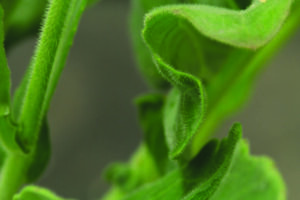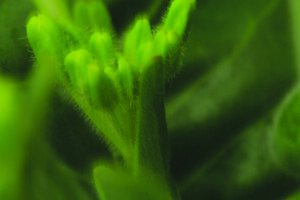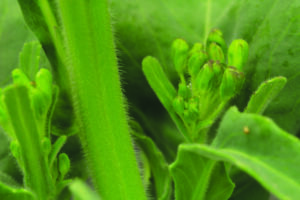Advances in genetic resources for breeding hairy canola
KEY RESULT:
This research on hairy canola (to deter flea beetle feeding) will provide canola breeders with B. napus lines that produce hairs, as well as genetic markers to allow this trait to be introduced into canola varieties.
PROJECT TITLE, PRINCIPAL INVESTIGATOR:
“Genetic resources for flea beetle resistance in canola,” Dwayne Hegedus, Agriculture and Agri-Food Canada Saskatoon
FUNDING:
AgriScience Program (Canola Cluster) under the Canadian Agricultural Partnership
PUBLISHED ARTICLES:
Read the full report on the Canola Research Hub.
Plants possess a variety of biochemical and morphological defences aimed at deterring insects from feeding and oviposition (egg laying). One is having hairs (trichomes) as a physical defence against herbivore feeding and oviposition. Mature leaves of Brassica villosa (a species closely related to B. oleracea) have an extremely high density of hairs which results in insects – including flea beetles – avoiding the leaves. These hairs deter beetles by disrupting their normal feeding behavior.
The trait was likely lost in the breeding development of our current canola varieties. Since flea beetles are the most economically damaging pest of canola and there are currently no canola varieties with any level of natural resistance to flea beetles, Hegedus’ project addressed this gap. The current research provides canola breeders with B. napus lines that produce hairs, as well as genetic markers to allow this trait to be introduced into canola varieties. This work builds on previous work by researchers at Agriculture and Agri-Food Canada and the University of Saskatchewan who identified lines of B. napus, and the related B. villosa species, producing hairs on their leaves and stems.
To test these lines, self-sustaining striped and crucifer flea beetle colonies were established.
Results
Genetic breeding efforts allowed the research team to identify two hairy lines from which mapping populations were used for further breeding efforts. Assessing this population also led to a discovery of the location of a major gene contributing to hair formation. These and other genetic findings from this research (which can be used to breed this trait into future canola lines and potential varieties) will be published and made available to breeders for use.
In another effort, the research team worked on accessing the B. villosa hairy trait to resynthesize a hairy B. napus and was able to identify lines with other promising properties.
They were able to separate the vernalization requirement/late flowering and self-incompatibility associated with B. villosa from the hairy leaf trait. Leaf wax is also known to affect flea beetle feeding. Some lines have high hair density on the leaves and other parts of the plants including the stems, stamens and pods, but also exhibit high levels of leaf waxiness as per the B. villosa parent.
A chemical analysis of the wax revealed that wax from each of the two parents had different compositions. Future research would be needed to examine leaf wax compositions in hairy and non-hairy plants in the population as a second physical barrier against flea beetles. Leaf pigment content, which is also known to be involved in flea beetle resistance, was found to vary between lines, but was independent of hair abundance.



Credit: Hegedus research team.





